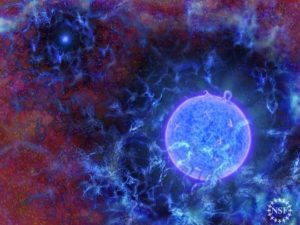REVIVED 46,000 YEAR OLD WORM DEBUNKS MACRO-EVOLUTION
CNN ARTICLE, July 28,2023:
“Scientists have revived a worm that was frozen 46,000 years ago — at a time when woolly mammoths, sabre-toothed tigers and giant elks still roamed the Earth.
The roundworm, of a previously unknown species, survived 40 meters (131.2 feet) below the surface in the Siberian permafrost in a dormant state known as cryptobiosis, according to Teymuras Kurzchalia, professor emeritus at the Max Planck Institute of Molecular Cell Biology and Genetics in Dresden and one of the scientists involved in the research.
Scientists have revived a ‘zombie’ virus that spent 48,500 years frozen in permafrost
Organisms in a cryptobiotic state can endure the complete absence of water or oxygen and withstand high temperatures, as well as freezing or extremely salty conditions. They remain in a state “between death and life,” in which their metabolic rates decrease to an undetectable level, Kurzchalia explained.
“One can halt life and then start it from the beginning. This a major finding,” he said, adding that other organisms previously revived from this state had survived for decades rather than millennia.
Five years ago, scientists from the Institute of Physicochemical and Biological Problems in Soil Science in Russia found two roundworm species in the Siberian permafrost.
One of the researchers, Anastasia Shatilovich, revived two of the worms at the institute by simply rehydrating them with water, before taking around 100 worms to labs in Germany for further analysis, transporting them in her pocket.
After thawing the worms, the scientists used radiocarbon analysis of the plant material in the sample to establish that the deposits had not been thawed since between 45,839 and 47,769 years ago.
But still, they didn’t know whether the worm was a known species. Eventually, genetic analysis conducted by scientists in Dresden and Cologne showed that these worms belonged to a novel species, which researchers named Panagrolaimus kolymaenis.
Researchers also found that the P. kolymaenis shared with C. elegans — another organism often used in scientific studies — “a molecular toolkit” that could allow it to survive cryptobiosis. Both organisms produce a sugar called trehalose, possibly enabling them to endure freezing and dehydration.
Belching lakes, mystery craters, ‘zombie fires’: How the climate crisis is transforming the Arctic permafrost
“To see that the same biochemical pathway is used in a species which is 200, 300 million years away, that’s really striking,” said Philipp Schiffer, research group leader of the Institute of Zoology at the University of Cologne and one of the scientists involved in the study. “It means that some processes in evolution are deeply conserved.”
And, Schiffer added, there are other actionable insights which can be gleaned by studying these organisms.
“By looking at and analyzing these animals, we can maybe inform conservation biology, or maybe even develop efforts to protect other species, or at least learn what to do to protect them in these extreme conditions that we have now,” he told CNN.”
In the CNN article above, “Philipp Schiffer, research group leader of the Institute of Zoology at the University of Cologne”, admits: “It means that some processes in evolution are deeply conserved.” This newly discovered and revived 46,000 year old worm is more evidence that the Darwinian theory of Macro-Evolution is deeply flawed, and does not fit the facts. This 46,000 year-old worm is much like worms in existence today, indicating that Darwinism, or Macro-Evolution, does not happen, and has never happened.
